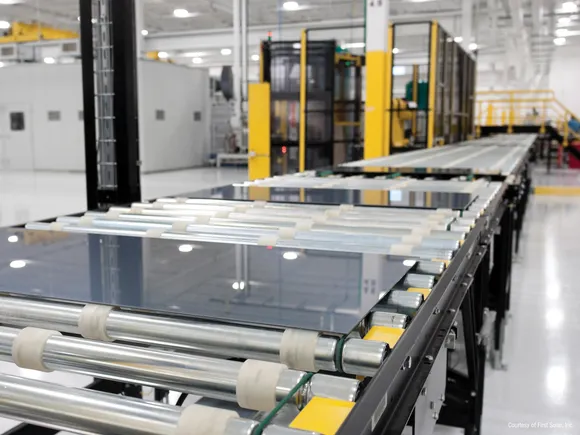Supercharging Food Packing Operations with Accessible AI
By Derek Goldstein, Director of PO/AR Financing, Blaze Allen Key takeaways: AI offers accessible tools for food packers to immediately improve operations through better forecasting, inventory management, and disruption response […]


By Derek Goldstein, Director of PO/AR Financing, Blaze Allen
Key takeaways:
- AI offers accessible tools for food packers to immediately improve operations through better forecasting, inventory management, and disruption response — without requiring complex technical integration.
- Language models excel at practical applications including data analysis, scenario planning, communication drafting, and financial risk assessment that can reduce waste and improve decision-making.
- Implementation can be straightforward and low-cost, allowing food packing companies to work smarter by applying AI to everyday challenges like production scheduling, inventory rotation, and customer communications.
AI is becoming a regular part of how companies manage supply chains, optimize operations, and respond to shifting market conditions. In the food packing industry, where timing, quality, and cost control are essential, AI has the potential to reduce waste, improve planning, and support decision-making across the board.
While many AI tools require complex integrations or technical expertise, language models like ChatGPT offer an accessible way to begin using AI immediately, particularly for analyzing data, drafting communications, or improving planning. Below, we look at several areas where AI tools can be implemented today to immediately supercharge your operations.
Forecasting and planning
AI can help identify trends and improve forecasting accuracy, reducing the risk of overproduction or stockouts. For food packers, this might include adjusting production schedules based on seasonal trends or upcoming holidays. Some AI tools are capable of being fed data through an upload (as easy as attaching a PDF) and are also capable of searching the internet for information, making them a powerful way to combine your historical data with general market research.
How AI helps:
- Summarizing historical sales data to highlight demand patterns
- Reviewing multiple sources (event calendars, weather, past sales) to build rough demand scenarios
- Drafting customer memos recommending early ordering based on upcoming trends
Example: “Based on our last three years of data, what products tend to spike around Labor Day, and by how much?”
Inventory management and waste reduction
AI tools can optimize inventory by balancing shelf life, ordering patterns, and storage constraints. Over time, this can significantly reduce food waste and unnecessary storage costs.
How AI helps:
- Analyzing current inventory reports and suggesting reorder points
- Reviewing shelf-life data to prioritize usage
- Assisting in documenting policies for FIFO (first-in, first-out) inventory rotation
Example: “Given these ingredient expiration dates, what’s the best order to schedule our next two weeks of production?”
Responding to disruptions
AI can enhance real-time decision-making during delays, shortages, or sudden market shifts. The recent tariff situation underscored the importance of having contingency plans and the ability to pivot quickly. AI tools excel at rapidly evaluating options and conducting scenario planning — even for challenges that haven’t yet emerged. By shifting from reactive to proactive decision-making, you’ll gain a competitive edge over your peers.
How AI helps:
- Drafting contingency plans for delayed shipments
- Generating communication templates for customers or suppliers during a disruption
- Comparing options like switching suppliers or adjusting delivery windows
Example: “Supplier B just reported a delay. What’s a short email I can send to customers explaining the delay and offering a revised timeline?”
Internal and customer communication
A significant portion of operational work involves communication — whether it’s standard operating procedures, safety documentation, or customer updates. AI can help speed up this documentation process and is able to learn as you instruct it to create documents in the style you prefer. Since tools like ChatGPT are technically language models, they are especially proficient at this type of work.
How AI helps:
- Drafting training guides or SOPs
- Writing customer updates or packaging change notices
- Creating multilingual versions of product handling instructions
Example: “Write a brief guide explaining our updated packing procedure for new hires.”
Financial and risk analysis
Financial stability in food packing is tightly linked to supplier terms, customer payment behavior, and order timing. In purchase order financing, AI is increasingly used to assess risk and predict cash flow — food packers face similar risks, and AI tools can help them evaluate this risk more consistently without needing a dedicated financial analyst.
How AI helps:
- Reviewing payment history data to flag potential risk from late-paying customers.
- Estimating cash flow needs based on pending orders and material costs
- Drafting internal memos for financing decisions or explaining risk exposure
Example: “Can you review my customers’ payment behavior and categorize my customer list by risk level?”
AI doesn’t need to be complicated or costly to be useful. For companies in the food packing supply chain, these tools offer a low-barrier way to start experimenting with AI and begin improving clarity, efficiency, and planning. At the end of the day it is not always about being on the cutting edge — it’s about using what’s available to work smarter.
 Derek Goldstein specializes in providing purchase order financing and accounts receivable factoring to CPG brands across the country. Blaze Allen partners with co-packers to provide their customers with funding, and works directly with CPG brands to provide capital to grow.
Derek Goldstein specializes in providing purchase order financing and accounts receivable factoring to CPG brands across the country. Blaze Allen partners with co-packers to provide their customers with funding, and works directly with CPG brands to provide capital to grow.






















































































































































